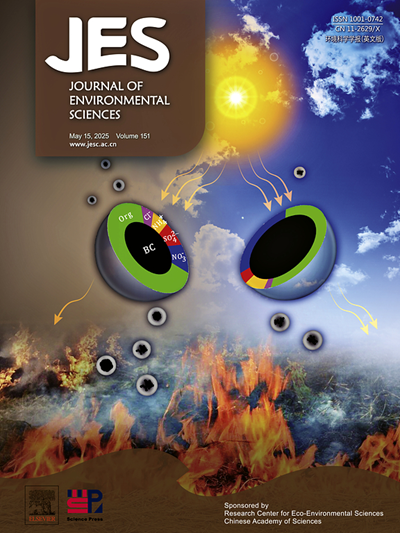Reconstruction of the three-dimensional dissolved oxygen and its spatio-temporal variations in the Mediterranean Sea using machine learning
IF 5.9
2区 环境科学与生态学
Q1 ENVIRONMENTAL SCIENCES
引用次数: 0
Abstract
Oceanic dissolved oxygen (DO) concentration is crucial for assessing the status of marine ecosystems. Against the backdrop of global warming, DO shows a general decrease, posing a threat to the health of marine ecosystems. Therefore, there is an urgent need to develop advanced tools to characterize the spatio-temporal variations of three-dimensional (3D) DO. To address this challenge, this study introduces the Light Gradient Boosting Machine (LightGBM), combining satellite remote sensing and reanalysis data with Biogeochemical Argo data to accurately reconstruct the 3D DO structure in the Mediterranean Sea from 2010 to 2022. Various environmental parameters are incorporated as inputs, including spatio-temporal features, meteorological characteristics, and ocean color properties. The LightGBM model demonstrates excellent performance on the testing dataset with R2 of 0.958. The modeled DO agrees better with in-situ measurements than products from numerical models. Using the Shapley Additive exPlanations method, the contributions of input features are assessed. Sea surface temperatures provide a correlation with DO at the sea surface, while spatial coordinates supplement the view of the ocean interior. Based on the reconstructed 3D DO structure, we identify an oxygen minimum zone in the western Mediterranean that expands continuously, reaching depths of approximately 300–800 m. The western Mediterranean exhibits a significant declining trend. This study enhances marine environmental evidence by proposing a precise and cost-effective approach for reconstructing 3D DO, thereby offering insights into the dynamics of DO variations under changing climatic conditions.
利用机器学习重建地中海三维溶解氧及其时空变化
海洋溶解氧(DO)浓度对评估海洋生态系统状况至关重要。在全球变暖的背景下,DO呈普遍减少趋势,对海洋生态系统的健康构成威胁。因此,迫切需要开发先进的工具来表征三维DO的时空变化。为了解决这一挑战,本研究引入了光梯度增强机(LightGBM),将卫星遥感和再分析数据与生物地球化学Argo数据相结合,精确重建了2010 - 2022年地中海的三维DO结构。各种环境参数作为输入,包括时空特征、气象特征和海洋颜色特性。LightGBM模型在测试数据集上表现出良好的性能,R2为0.958。模拟的DO比数值模型的结果更符合现场测量结果。使用Shapley加性解释方法,评估了输入特征的贡献。海面温度提供了与海面DO的相关性,而空间坐标补充了海洋内部的视图。根据重建的三维DO结构,我们在地中海西部确定了一个不断扩大的氧气最小区,深度约为300-800米。西地中海呈现明显的下降趋势。本研究通过提出一种精确且具有成本效益的三维DO重建方法来增强海洋环境证据,从而深入了解气候条件变化下DO的动态变化。
本文章由计算机程序翻译,如有差异,请以英文原文为准。
求助全文
约1分钟内获得全文
求助全文
来源期刊

Journal of Environmental Sciences-china
环境科学-环境科学
CiteScore
13.70
自引率
0.00%
发文量
6354
审稿时长
2.6 months
期刊介绍:
The Journal of Environmental Sciences is an international journal started in 1989. The journal is devoted to publish original, peer-reviewed research papers on main aspects of environmental sciences, such as environmental chemistry, environmental biology, ecology, geosciences and environmental physics. Appropriate subjects include basic and applied research on atmospheric, terrestrial and aquatic environments, pollution control and abatement technology, conservation of natural resources, environmental health and toxicology. Announcements of international environmental science meetings and other recent information are also included.
 求助内容:
求助内容: 应助结果提醒方式:
应助结果提醒方式:


